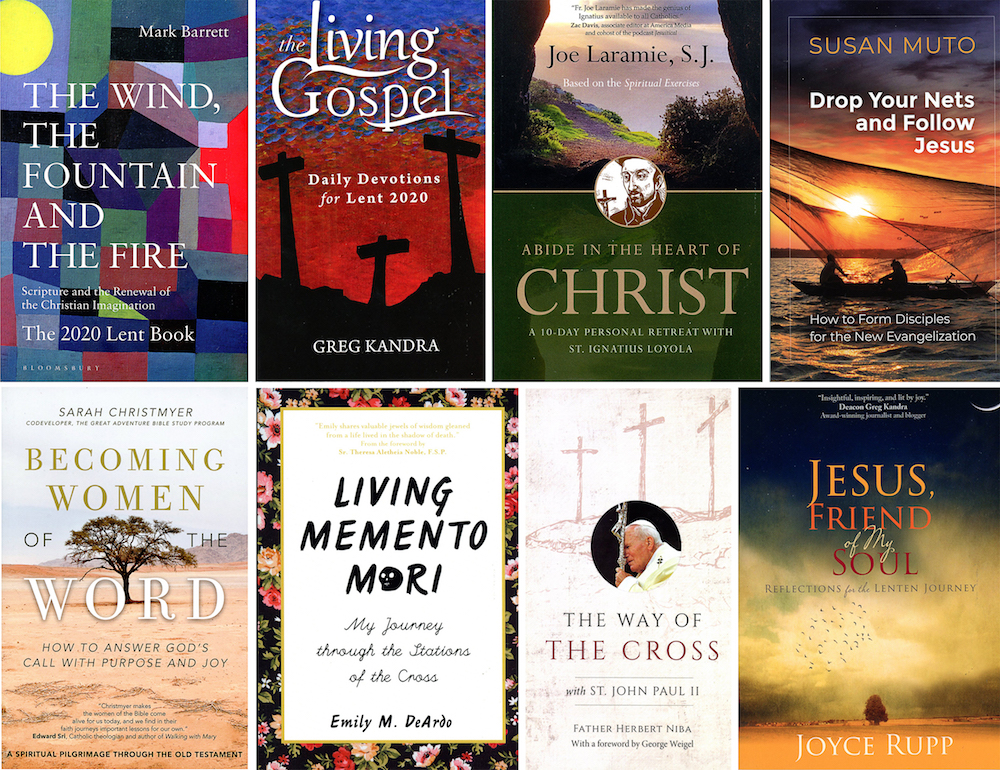
Pillars of Lent: Fasting
Soon after Catholics hear the word “Lent,” thoughts of what to fast from often emerge.
Reasons for fasting
God commanded it to Adam and Eve who broke the fast
It’s ultimately about fasting from sin
Reveals our dependence on God and not world’s resources
Ancient way of preparing for Eucharist, the truest of foods
God commanded it to Adam and Eve who broke the fast
Preparation for Baptism and grace of other sacraments
Means of saving resources to give to poor
Means of self-discipline, chastity, restraining of appetites
#ThisLentILetGo
Franciscan Friar Casey Cole of breakinginthehabit.org encouraged followers to use the hashtag to find support, share the journey and commit to a deeper life in Christ. He is also author of “Let Go: Seven Stumbling Blocks to Christian Discipleship,” which released Jan. 30. Video reflections
The Lenten pillar mirrors Jesus’ fasting in the desert and draws Catholics away from what isn’t heavenly to make room for what is. Failing at one’s Lenten fast is okay, as long as there’s sincere effort to begin again aright. The Act of Contrition and sacrament of Reconciliation are based on fresh starts.
“The Lord says each and every day, ‘Begin again.’ It’s the devil who wants to hold you back,” said Dcn. Estevan Wetzel, house deacon for the Diocese of Phoenix’s Nazareth House Seminary said.
Shame is always of the devil, he added. “You’re not the sum of your faults and negligence, even sins.”
He and the three other clergy and five seminarians at Nazareth House erected a negativity jar for Lent. A shaming lament or put down costs seminarians 50 cents and clergy $5.
Fasts of abstinence from certain things is a long-used method of improving the virtue of self-discipline. It dates back to Eden, Fr. Daniel Merz, former associate director of the U.S. Bishops’ Divine Worship office wrote for usccb.org. Adam and Eve fasted from the fruit of the famed tree, but ultimately broke it, rejecting a life dependent on God alone for one dependent on bread alone, Fr. Merz wrote.
Christ, the new Adam, was also tempted with food — this time in the desert — and overcame it. “This liberates us from total dependence on food, on matter, on the world,” Fr. Merz said. “For the Christian, fasting is the only means by which man recovers his true spiritual nature. In order for fasting to be effective, then, the spirit must be a part of it.”
He said to expect temptation, irritation, failure and a fight between good and evil. The discovery of Christian life as a “fight” and “effort” is an essential aspect of fasting, he said.
Erasing screen time
Veronica, a West Valley Catholic first fasted from Facebook as part of a Ninevah 90 effort. It was election season, so Veronica’s sacrifice was for the country. She is once again fasting from Facebook this year.
“Social media can rob your peace,” Veronica said. She chose to withhold a last name in order not to flaunt her fast per Ash Wednesday’s Gospel. Early fasting days were filled with a detox of sorts and resisting temptation to justify logging in.

Social media was a way to unwind after work, but it also kept her away from being truly present in the moment with those physically around her. The more she stayed off her device, the more others at home did, too.
The fast disciplined Veronica when alone turn to swap social media time for prayer especially in mundane down time like the grocery store line. “It was, ‘I’m not going to do this [insert own Lenten fast here], so I’m going to do a Rosary,” or pay for someone, Veronica said.
The experience also revived her capacity to absorb longer-form content. Veronica almost didn’t get to the end of an article about how social media has re-wired the brain because “it wasn’t short enough.” Now, Veronica and her husband are regularly reading the deep material required of diocesan Kino Catechetical Institute students.
Deeper reading
Tiki Garcia Dubus can relate. The Mesa Catholic — and art teacher at St. Theresa School in Phoenix — is an avid reader and paused on every genre but spiritual reading for Lent three years ago. Prior to that, she owned such titles, but they collected more dust than dog ears. Tackling those titles at the time was like textbook reading. Her Lenten fast toned up her spiritual intellect.
“Now it’s become enjoyable and I never thought it would be,” Dubus said.

So much so that much of her hour of reading per day is largely spiritual, with pleasure reading demoted to about twice a week. Dubus has met some saintly friends along the way too. She realized St. Teresa of Ávila was the only one in “My Sisters the Saints” with whom she was not as familiar. Turns out she related to the doctor of the Church’s personality. “I thought we could be friends,” Dubus said.
She also got to know St. Catherine of Siena more intimately. A book on the saint sat on the shelf for at least a year until her pastor challenged parishioners to read “The Dialogue of St. Catherine of Siena” prior to his retirement.
Dubus’ spiritual reading inspired her to commit to making a daily Examen this Lent instead of occasionally and reading about St. Ignatius of Loyola who popularized it.
“He’s the one I plan on studying this Lent — unless somebody else shows up,” Dubus said.
Weekly meat fast
What is guaranteed to show up twice during Lent for Catholics ages 18 to 59 is the obligatory food fast on Ash Wednesday and Good Friday. Lenten Fridays are a “meat fast” for those 14 and up, though it’s more common to hear about it as abstaining from meat. Sr. Mary Brigid Burnham estimates she has cooked a meatless meal for herself and up to seven other Dominican Sisters of St. Cecilia the last 10 years.
She selects a recipe offered by CRS Rice Bowl common in one of the 110 countries Catholic Relief Services reaches. The CRS effort is the U.S. bishops’ international relief and development agency. For Sr. Mary Brigid, it’s a conscious decision to both avoid meat and eat in solidarity with a good three-fourths of the world. CRS encourages Catholics to donate cost-saving efforts to its mission. Sr. Mary Brigid takes it steps farther and tries to prepare the meals in a way she envisions it in other countries.
“If we just take electronics out of the equation, how would I do this using my arm strength?” Sr. Mary Brigid ponders. She regrets not opting for a mortar and pestle one year; the food processor complicated it. A heavy bowl, spoon and rolling pin are often the only key equipment needed for CRS Rice Bowl recipes.
Sr. Mary Brigid and the sisters welcome the meals, whether they’re soups, rice, beans, potatoes or something else, though they typically add a vegetable side dish. They learn about the families impacted via info and pictures on the rice bowl.
“We’re still hungry (afterwards), which is part of the point. We’re supposed to be a little emptier during Lent,” Sr. Mary Brigid said.

Related





